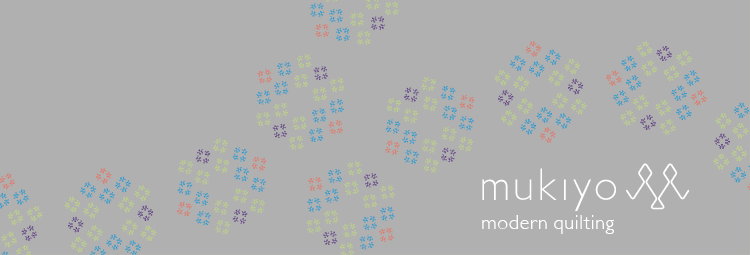Paper piecing and my experiences when trying it for the first time
Until
recently I had given paper piecing a very wide berth. It always seemed
too complicated and something used more in traditional quilting. I was
also confused about the terminology - foundation? English?? So first
off:
- English paper piecing
- a traditional method in which the quilt is sewn entirely by hand,
usually using one shape (for example, hexagons) and pre-cut pieces of
paper of that shape to create intricate quilt designs with precisely
matched points. Because English paper piecing is done by hand, it is
portable and can be done on the plane, in the doctor's waiting room or
anywhere else where you might otherwise pass the time by knitting or
crocheting.
- Foundation paper piecing
- a block design is printed or drawn onto a piece of paper and the
fabric segments of the block are sewn by machine onto the paper, along
the marked lines. Blocks can be made up of a few or many different
smaller shapes. As with English paper piecing, this method allows you to
sew perfectly matched points, whether you are following a traditional
pattern such as Mariner's Compass or creating your own modern designs.
I wanted to enter a quilt competition for which I had to design and sew a relatively small quilt (24'' x 24''). The design I came up with was quite intricate and so I decided I would try and get it more accurate by using foundation paper piecing. Before I could start creating my own paper templates, I needed to get a basic grasp of the technique. I found a brilliant Crafty Gemini tutorial which you can watch here.
The next step was to practice. I'd say that Carol Doak is one of the quilting world's foundation paper piecing gurus and in addition to a wealth of information, she has lots of free patterns on her website. I used one of Carol's patterns and it took me about five attempts just to get started with the pieces facing in the right direction and the correct coverage of the template! Turning the paper around, trying to figure out which direction is which because you work in reverse, ending up with things facing the wrong way, it is the map reading of quilting!
My failed attempts at paper piecing (June 2013)
I decided to raid my scrap box
and do as many practice runs as it took for me to feel comfortable with
the method. For someone who is usually a control freak quilter, random
scrap quilting was quite liberating. Once I had completed several
practice pieces, foundation paper piecing and I had become friends (not
exactly close, but maybe the kind who see each other every few years).
This is what I learnt:
- When
you cut the individual pieces for each block, give yourself a lot of
seam allowance (at least 1/2") so you don't have to worry about the
exact position of each piece. You can cut off the excess fabric once you
have sewn the seam.
- Sewing the first two pieces was the
most challenging part. Once I had worked that out, the rest was easier
so take your time, hold the fabric in place and flip it open to make
sure it fits properly etc., before you start sewing.
- Use really small stitches. I set my machine to 1.5. This perforates the paper, making it easier to remove from the back once you are done.
- End each line you sew about 1/4'' beyond the edge of the block. This makes it easier to start the tearing off process once you are done.
- Trim threads as you go. I am usually lazy about this, but because the individual block segments are so small, you have a lot of thread ends floating about on one block and they get in the way.
- Trim the
seams as you go. The Quilt Police may insist on 1/4'' seams, but
because noone will see these seams, I don't think this is really
necessary. Just make them tidy and make sure darker fabric seams don't
overlap lighter fabrics on the back of the quilt so that you don't have
dark shadows on your lighter fabric on the quilt top.
- Iron
as you go. WIth paper piecing, you have to iron the seams in one
direction. I am a die hard iron seams open quilter because I like the
flatness it gives to the quilt top so this took some getting used to.
- When you remove the paper from the back of the block, tear it off slowly to protect the seams and use tweezers to remove any last little pieces of paper left in the seams.
- Paper dulls blades and needles so you may need to replace your cutting blades and sewing machine needles more often than usual.
- If you print your blocks using your home printer, do a test run with the iron to see if the heat transfers the ink. I used a laser printer and had no problems, but inkjet printouts may react differently.
- You can buy special paper on which to print or draw block patterns, but if you cannot find this or don't want the extra expense, light weight copy paper works just as well.
- Above all, practice, practice, practice. Once you get the hang of it, paper piecing is not that difficult and you can use it to create your own designs.
I made five small blocks in total and only the fifth had no mistakes. I will turn them into a quilt soon!
The final five practice paper pieced blocks (June 2013)



